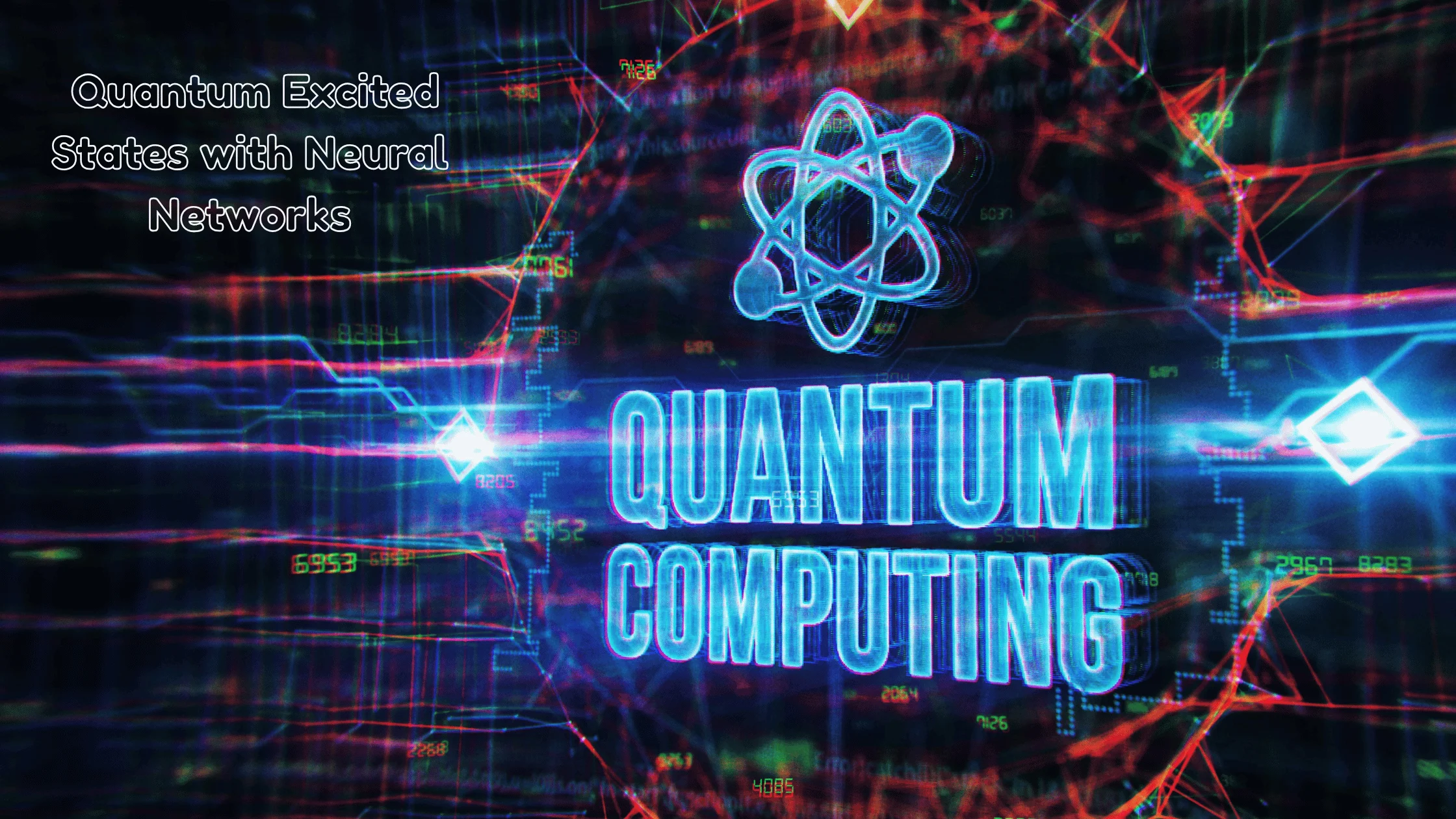Accurate Computation of Quantum Excited States with Neural Networks
Published: 1 Jun 2025
The role of quantum mechanics in comprehending the traits of molecules and materials at the quantum level is of paramount importance. It is of prime importance to achieve accurate computational results for quantum mechanics in not only the ground but also the excited states of systems, especially for applications in quantum chemistry, photonics, and materials science.

Traditional methods of computational quantum chemistry often have difficulties with the complexity of excited-state calculations and yield results for a few prototype systems. Neural networks, on the other hand, have emerged as powerful and accurate tools for ‘building up’ the many-body wave function of a system from the results of quantum mechanics in a few well-characterized prototype systems.
In this article, we discuss the particulars of how neural networks enhance the ‘computational quantum mechanics’ of excited states, as well as the impact on research in quantum materials and quantum chemistry.
Understanding Quantum Excited States
States of a quantum system that have more energy than the ground state are called quantum excited states. These states are key to understanding a lot of things, like:
- How atoms and molecules interact with light, and hence how they form the colors of the world around us.
- Why certain materials conduct electricity while others don’t, and why some things act like magnets, the workings of lasers, and other systems that emit coherent light.
Molecular spectroscopy is the study of how molecules absorb and emit light.
Quantum systems undergo electronic transitions when a system’s electron moves from one quantum state to another. These quantum transitions were first observed in the hydrogen atom. Over the subsequent century, scientists have built a better understanding of how quantum transitions occur, using this knowledge to make accurate predictions and create inventions.
Two of these key inventions are lasers and transistors. Both of these devices rely on using a stream of electrons in a manner that is governed by the laws of quantum mechanics:
- Hydrogen atom;
- Stream of electrons;
- Quantum mechanics.
To compute these states accurately requires solving the Schrödinger equation for higher-energy eigenstates, which is a classically expensive computation.
Challenges in Computing Excited States
Classic computation methods used in quantum chemistry, like Hartree-Fock, Density Functional (DFT), or Coupled Cluster Theory, find it hard to deal with excited states when they do their calculations.
Some of these old methods can’t get the right answer, while others can get the right answer but only if you make pretty severe idealizing assumptions (often about the way the electrons behave). And if you’re interested in systems where the electrons can easily get excited, well, these methods aren’t going to cut it.
- Significant expense of computation for extensive frameworks.
- Insufficient precision in depicting myriad-body interrelations.
- Strong electron correlations can be difficult to manage.
Researchers have ventured into machine learning and neural networks to find possible solutions to these challenges.
Neural Networks for Quantum Excited States
Neural networks can improve calculations done for excited states. They can do this because they have learned to understand complex quantum relationships and to produce very high quality approximations of the results we are after. Some of the key techniques they use include:
Neural Quantum States (NQS)
Quantum neural states encode quantum wavefunctions in the form of artificial neural networks. These networks are ‘trained’ to produce optimized representations of the quantum wavefunctions. For ambitious programs in quantum AI, some widely used neural architectures include:
- Boltzmann Machines, restricted (RBM): Used to probabilistically model wavefunctions of quantum states.
- Methods of the Variational Quantum Monte Carlo (VQMC) type: Refine deep learning wave function approximations.
Deep Learning for Excited-State Prediction
Introduction to Excited-State Prediction
Deep learning (DL) is a class of machine learning (ML) methods that can learn very complex, non-linear functions between large sets of input-output pairs. They have proven to be very powerful in different applications, such as speech recognition and image classification.
Currently, there are different architectures that can be used for deep learning, with the most popular ones being convolutional neural networks (CNNs) and recurrent neural networks (RNNs). In this chapter, we will mainly focus on RNNs when using DL methods to predict excited states of many-body quantum mechanical systems.
General Review on Models and Machine Learning Techniques for Predicting Excited States
When obtaining approximate solutions to the many-body Schrödinger equation for the excited states of electrons, research efforts have mainly concentrated on two lines of approximation: one is to use variational methods (which represent upper bounds to the energy of the excited states) and the other is to use perturbation theory (which is a rather successful means to obtain approximate solutions when the systems are close to the ground state).
Furthermore, as will be discussed in some depth below, the use of these two approximation lines has produced very powerful computational methods, such as configuration interaction (CI), which is a variational method, and coupled cluster (CC) theory, which is a very successful perturbative method.
Both of these methods produce very accurate solutions for the excited states of many-body quantum systems.
Molecular and quantum materials’ large datasets serve as the base for deep learning model training to predict excited-state energies and electronic properties.
- Quantum neural networks (QNNs): Successful in acquiring knowledge about quantum interactions among electrons.
- Models based on transformers: Efficiently capture quantum correlations over large distances.
Dimensionality Reduction via Autoencoders
Autoencoder networks reduce the complexity of quantum excited-state computations. They do so by mapping high-dimensional quantum states into lower-dimensional representations. This not only makes the computations faster, but also makes them more efficient.
Reinforcement Learning in Quantum Optimization
Reinforcement learning is applied to optimize solutions for excited states in an iterative manner.
- Adaptive exploration strategies: Enhance energy computations in real time.
- Combining reinforcement learning with quantum simulations: Links classical and quantum computing techniques.
Impact on Quantum Computing and Chemistry
How neural networks have transformed the excited-state computation:
- They allow reaching high accuracy at low computational cost.
- They are capable of extrapolating properties of unseen systems.
- They naturally incorporate symmetries.
- Greater precision relative to traditional techniques.
- Decreased computational expenses for extensive quantum systems.
- Quantum algorithms that scale to solve real-world problems.
Real-World Applications
Drug discovery: forecasting the behaviors of biochemical molecules in excited states.
Material Science: Creating novel quantum materials with customized electronic attributes.
Photon interactions at the quantum level are what quantum optics is about.
Future Directions
The merger of quantum machine learning and neural networks holds the promise of further revolutionizing excited-state computations.
This is because, with the resources of today’s fastest quantum computers, one can—and in the near future, one will be able to afford to construct in full detail and then use for simulations quantum-enhanced neural networks that operate in real time.
Such enhancements should enable unprecedented accuracy in real-time quantum simulations of many-body physics.
Conclusion
Neural networks have emerged as robust instruments for calculating accurately quantum excited states, moving past ordinary computational limits and uncovering fresh realms of quantum chemistry and materials science. With their burgeoning evolution, machine learning methods will assume an ever-more-central position in the progress of quantum research.

- Be Respectful
- Stay Relevant
- Stay Positive
- True Feedback
- Encourage Discussion
- Avoid Spamming
- No Fake News
- Don't Copy-Paste
- No Personal Attacks

- Be Respectful
- Stay Relevant
- Stay Positive
- True Feedback
- Encourage Discussion
- Avoid Spamming
- No Fake News
- Don't Copy-Paste
- No Personal Attacks





